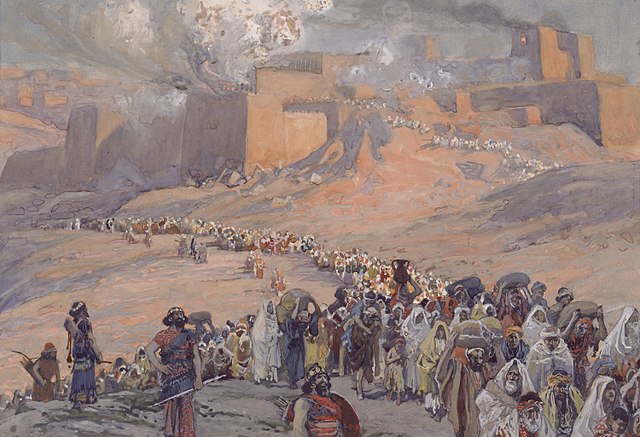
The Flight of the Prisoners (1896) by James Tissot; the exile of the Jews from Canaan to Babylon \ (c) en.wikipedia.org/wiki/Babylonian_captivity
In this article, we will talk about a quick overview of a period in history that majorly influenced the development of Jewish faith, thought, and background, The Babylonian Exile. Though it only lasted for a brief period of time, specifically only less than a century, it is still considered to be tremendously momentous for Jewish history.
If you aim to expand your knowledge on our shared history during your travels, consider joining us on a kosher river cruise. Travel in style, taste fine kosher cuisine, bask in wondrous sights, and uncover stories about our Jewish history in each place that we visit. Make your Jewish trips more memorable by joining us at kosher Riverboat Cruises. Book a trip with us soon!
The Destruction of The Temple
One of the most significant and impactful dates in Jewish history was the Destruction of the Temple in the year 586 BCE. This date along with the beginning of the siege, the breaching of the walls, and the burning of the temple are actually included into the Jewish liturgical calendar and is accompanied by a succession of fasting during the summer and ends on the day of Tisha B’av. The entire period of the destruction of the temple, about 3 weeks, is considered a time of semi-mourning by the Jewish community. Today, some Jews will still avoid activities like getting haircuts, playing music, and other restrictions in order to reflect on the unfortunate destruction of Solomon’s temple or the first temple. After the destruction of the first temple, the second temple would be rebuilt under Cyrus.
Moreover, an interesting fact to keep in mind is that King Nebuchadnezzar called one person to be in charge of the Jewish community, a Jewish leader named Gedaliah ben Ahikam. Gedaliah was assigned by Nebuchadnezzar in an attempt to calm and manage the population in order to avoid any development of further revolts and chaos. Unfortunately, he was one of the people who was murdered in an assassination by other Jewish leaders or individuals who were at the peak of their rage and resentment and was dead set on revolting against Babylon. The date of the assassination of Gedaliah by other Jews is also incorporated in the Jewish liturgical calendar. His death is marked on the 3rd day of Tishrei, also the day after Rosh Hashanah. This day is also observed as a day of fasting in commemoration of this dreadful event of intra-communal violence.
The Babylonian Exile
The Babylonian exile went on from 586 to 539 BCE and there were about 13,000 Jews that were exiled to Babylon. This event was actually documented in the Biblical book of Ezekiel. According to this record, There were a large number of Jews residing in the city of Nippur as well as some of the areas surrounding it. The city of Shushan was also near Nippur and it was where the Book of Esther took place. There are numerous details in the Book of Esther that align with the facts that we know regarding the Babylonian during that time as well.
During this time, the Jewish population was heavily influenced by the culture of Babylonia. Specifically, the Jews had adopted Armaic as a common language that was being spoken. In the long run, Armaic would actually replace Hebrew as the living language of the Jews, and eventually the entire Near East. The Armaic language is still being used today, in some parts of Turkey in Syria and it is also the language of the Babylonian Talmud. Though the Hebrew language was never abandoned, it progressively turned into the language of liturgy and scholarship instead of the language that was being used by the people. The names of the months in the Babylonian calendar were also adopted by the Jews.
